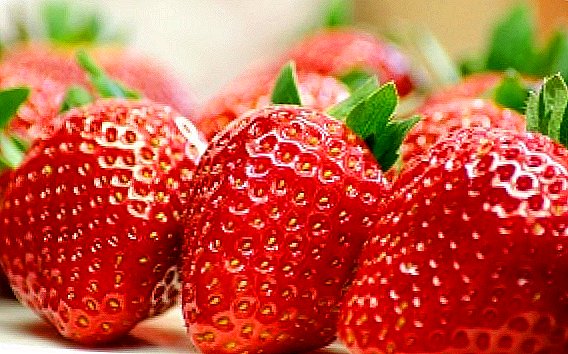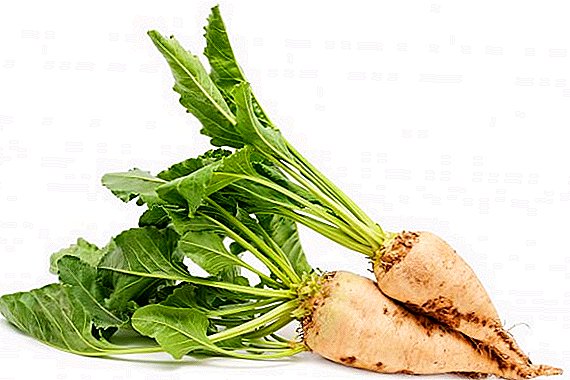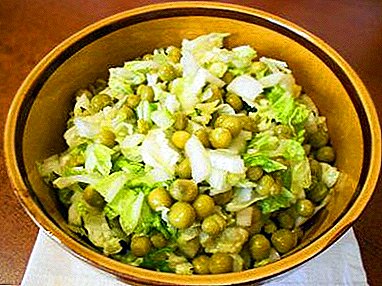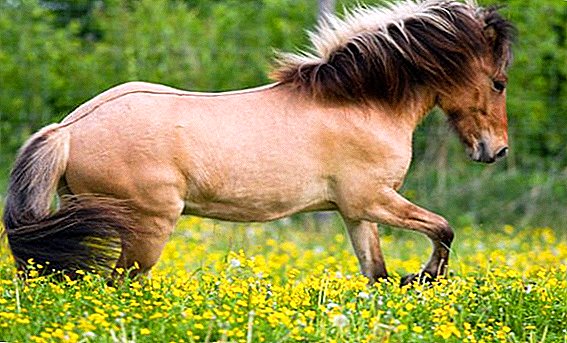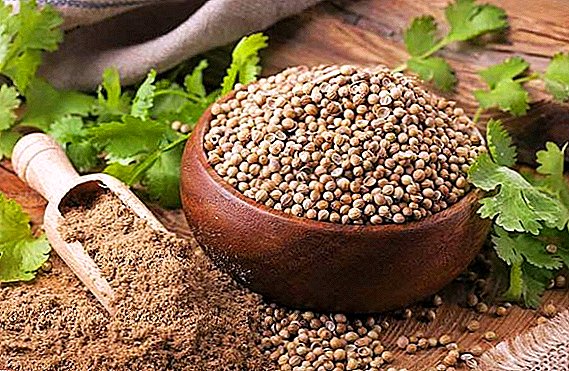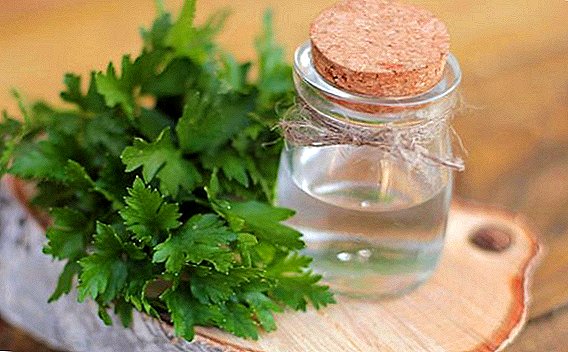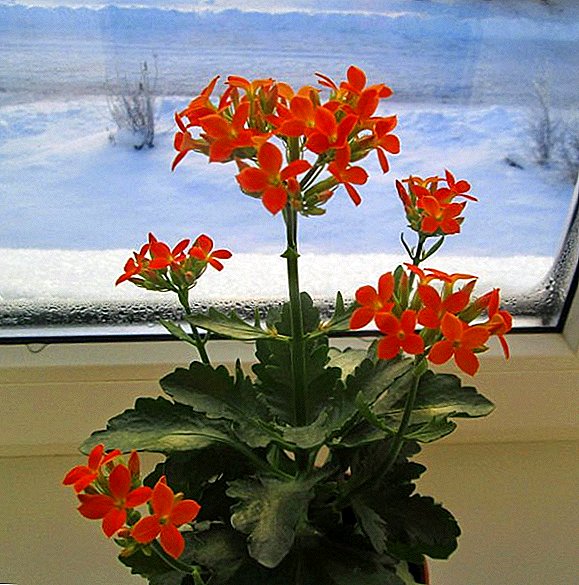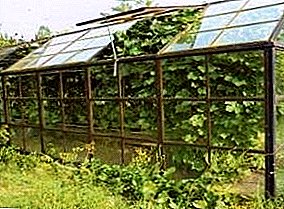
For many years grapes remain a symbol of fertility, a source of beneficial vitamins and the best raw materials for wine production.
The owner of the vineyard will not remain in the loser, especially if he takes care of the future harvest correctly. In our region, grapes prospectively grow as a greenhouse culture, which causes a short period of summer, the early onset of cold weather, frequent spring frosts.
The benefits of growing in a greenhouse
Growing grapes in the greenhouse is relevant both for the central zone of Russia and for the southern regions. In the first case can grow varietieswho simply do not have time to ripen in open ground, and in the south you can get a harvest of berries much earlier than the deadline. Besides:
- growing in greenhouse conditions allows you to protect the plant from the hardships of nature (rain, wind, fog, temperature changes);
- much easier to care for, especially in spring and autumn;
- flavoring the quality of the berries is no worse those that ripen on plants in open ground;
- berries are less cracked, because they are protected from rain.
- shelter allows you to protect from insects and birds, as well as from many diseases and pests. The number of chemical treatments against mildew, oidium is reduced;
- next to grapes you can plant other crops in between rows: strawberries, radishes, turnips, greens (parsley, onions, dill, basil);
- sometimes gardeners in the same room are grown tulips and other bulbous flowers for further sale.
Choice of varieties
 In greenhouse conditions, you can grow different grape varieties. The experience of wine-growers shows that the most successful among them are table varieties with an early or very early ripening period:
In greenhouse conditions, you can grow different grape varieties. The experience of wine-growers shows that the most successful among them are table varieties with an early or very early ripening period:
Bulgaria is stable (Queen of Paris) - Bulgarian amber-yellow grapes. It is highly resistant to diseases, does not require chemical pollination, bears fruits well.
Song (White Miracle) - has a very early ripening period. The berries are large, sugar, yellow-green color.
Laura - gives high rates of productivity, differs in large clusters and juicy berries. With good care, the mass of individual clusters can reach 2-2.4 kg.
Transparent - a good grade for the use in food, preparation of house dishes and drinks. Berries ripen sugar and fragrant.
In addition to these types, you can give a choice: Arcadia, Early North, Russian Korinka, Moscow Sustainable, Michurinsky and others.
Some growers acquire seedlings of different forcing periodsthat allows you to get a harvest throughout the warm season from spring to late autumn. You can combine early varieties with later ones.
Greenhouse requirements
How to grow grapes in the greenhouse? Before you start planting vines need choose the right room.
- Arched-type constructions are considered the most successful. These are often chosen for growing flowers;
- The height of the greenhouse should be from two and a half to three meters. The total area is selected based on the goals of cultivation. For eating berries and homemade preparations a small room will do, and for sale its area may be more than 20-30 square meters.
On how to build and strengthen the greenhouse from polycarbonate, how to make an arched, lean-to (wall), from window frames or choose a ready-made greenhouse, as well as how to properly arrange the building on the site, you can specify on our website.
Types of greenhouses for grapes:
- Film - well suited as seasonal shelter. They allow you to protect the plant from the vagaries of nature, to support its development and growth, to get a better crop.
- Polycarbonate Shelter - suitable for off-season (year-round) application. They are installed supporting structure and special vents for ventilation.
 Specialized stores offer a wide range of designs that can be purchased on site. To each design attached detailed assembly instructions and use. Some firms even offer assembly services for such premises.
Specialized stores offer a wide range of designs that can be purchased on site. To each design attached detailed assembly instructions and use. Some firms even offer assembly services for such premises.
This increases cash costs, but minimizes hassle and time spent. Many gardeners prefer to make such designs independently from improvised means, because it saves cash costs 4-5 times.
Preparatory work
Pay attention to the preparatory work that must be carried out before disembarking seedlings:
- Vine can be both inside the structure and outside. In this case, the main stem of the plant must necessarily enter the closed zone, therefore a hole is made in the lower part of the wall.
- Prepare the soil. For growing suitable fertile, loose, light soil mixture, which can be made from earth, sand, loam, peat, crushed chalk (at the rate of 90 grams for each second ten-liter bucket of soil) and mineral fertilizers.In order for the plant to develop strong deep roots it is recommended to pour the mixture into the prepared deep trench.
- Please note that the soil temperature in the room should be warmer than outside. The optimum temperature can be achieved through artificial heating.
- To protect the plant from sunburn indoors tensioned wire support system (in a horizontal position) with intervals of 20-30 cm. In this case, the top wire is placed 35-40 cm below the ridge and at least 35 cm from the glass.
- Be sure to take care of good drainage. If not, lay the pipes additionally.
Landing features
The technology of growing grapes in the greenhouse, includes a number of rules:
- young bushes begin to plant at the end of winter;
- The scheme of planting grapes in the greenhouse is as follows: a deep and wide pit is dug for planting (at least 35-40 cm). At the bottom of the fossa in the center you can make a small mound (as when planting an apple tree), center the seedling vertically in the center, straighten the roots, cover it with soil, lightly tamp and pour;
- Before planting, it is desirable to introduce organic fertilizers (compost, over-mature manure).
- pay attention to the distance between seedlings, which should be at least 50-65 cm. Only this way vine will get enough space for the development and formation of the main stem.
- Do not forget to look at the appearance of young bushes and roots before planting. The plant must be healthy and strong.
Trimming rules
 After planting seedlings need conduct pasynkovanie. Cut off weak shoots so that the plant does not spend on them strength during growth, and sent them to healthy twigs.
After planting seedlings need conduct pasynkovanie. Cut off weak shoots so that the plant does not spend on them strength during growth, and sent them to healthy twigs.
Inflorescences with unripe flowers as needed should also be removed. Pruning barren stems carried out to the level of 5 leaves. For shoots of the second order - up to the first leaf.
Over time, it is necessary to make thinning of the clusters. Sharp scissors carefully cut off the inner berries, along with which various small particles are removed on the vines. Do not forget to manually pollinate the grapes.. To do this, just gently shake the twigs with blossoming buds.
In autumn, long branches are pruned to the level of the initial bud, and the stems are cut by two thirds of the entire length.
Watering and feeding
Watering features:
- The first watering is carried out immediately after planting.
- Then, to maintain optimum soil moisture, young bushes are watered once every 6-7 days.
- During the flowering period, watering is suspended, as in the period of the formation of berries. Excessive moisture will negatively affect the quality of the crop.
- Please note that in the evening greenhouse grapes are not watered. Excess moisture in the air will lead to cracking berries.
Fertilization:
- apply nitrogenous top dressings extremely carefully;
- before planting it is desirable to make organic fertilizers;
- during bud break, ammonium nitrate can be laid down for good leaf development and bud formation, and superphosphate before flowering;
- over the course of further growth, only foliar fertilizers are applied. Superphosphate and ash are used after the end of the flowering period.
Wintering grapes
 Before the first cold weather, the plant needs hide under cover (around mid-October).
Before the first cold weather, the plant needs hide under cover (around mid-October).
To do this, the vines are tilted to the ground, covered with a thick layer of spruce branches and roofing felt.
You can also use it as a covering material. blankets, sintepon, sawdust.
If the roof of the greenhouse is removed, the plant can winter in the open air under the snow.
Fruiting problems
Why not fruit the grapes in the greenhouse?
- lack of nutrients (zinc, manganese, boron) - start feeding properly plant;
- the reverse situation may also occur - a surplus of nitrogenous fertilizers.
In this case the plant gives all the power on the formation of green, bad fruit or does not bring berries at all;
- affects yield and pruning technology. By the pea, not ripening berries leads to the late thinning of the vines. It also follows carry out the off-season pruning of twigs.
Growing grapes in a greenhouse is a troublesome task that takes a lot of time and effort. But, the result is worth it. Proper preparation of the premises, adherence to planting technology and good care will allow you to get a quick, plentiful, tasty harvest!
Useful videos about growing grapes in the greenhouse:


